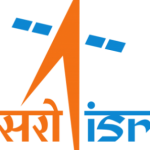When he visits Silicon Valley on September 26, Prime Minister Narendra Modi is likely to appeal to the corporations there to use India as a manufacturing base. High-tech manufacturing across diverse sectors is a part of the government’s ‘Make in India’ and ‘Digital India’ plans; it was also included in the 12th Plan (2012-2017). [1, 2, 3]
However, Modi probably also knows this can only be a short-haul policy. India cannot achieve sustainable economic growth through foreign high-tech companies. Outside their home countries, such corporations run or engage subsidiaries, branches, sub-contractors, joint-ventures, and front offices—but high-end research and development (R&D) is usually located within the parent corporation or at national agencies. It is rarely, if ever, outsourced to another country. Attracting such companies to India will therefore never create an R&D base here.
Instead, India must build an R&D foundation that will support indigenous high-tech companies—we need not emulate China by merely becoming a manufacturing base. India can initiate a strategic national megaproject that can propel it towards becoming an indigenous high-tech giant. India’s so-far modest space programme, if strengthened, could give the country that much-needed push.
After all, Silicon Valley and other complementary regions were created from megaprojects supported by governmental agencies such as the National Aeronautics and Space Administration (NASA), the U.S. Air Force and Navy, and the Defence Advanced Research Projects Agency (DARPA). These regions are the engines of the U.S.’s economic growth.
Silicon Valley evolved in five technological waves, each accompanied by global fervour for a decade or two. [6] In the first wave in the 1950s, the San Francisco Bay Area got its first stimulus from numerous defence contracts for state-of-the-art technologies such as radars, missiles, and satellite systems. In the ’60s, the Bay Area received contracts from the NASA Apollo programme for the R&D of integrated circuits and propulsion systems, and from the U.S. Air Force for time-sharing systems for its defence programme.
During this period, DARPA created ARPANET, the primitive version of the Internet. In the ’70s and ’80s the development of personal computers and operating systems sprouted across Silicon Valley. IBM, Apple, Xerox, Hewlett-Packard, Oracle, Microsoft, and others consolidated their position as non-defence commercial high-tech manufacturers. With the ’90s, the Internet and World Wide Web grew in use among the general public. And since the 2000s Silicon Valley is riding a wave of social media and mobile computing.
The huge success of Silicon Valley and other similar regions in the U.S., such as Massachusetts Route 128, Optics Valley, Dulles Technology Corridor, and Tech Coast, are a testimony to the U.S. doctrine of using R&D as the motor and federal budgets as the fuel to achieve a techno-strategic advantage. The success of American high-tech corporations is largely a result of the efforts of the country’s national agencies like NASA and DARPA, who continue to steer R&D even today.
The U.S. invests 2.8% of its total GDP on R&D—or a massive $0.46 trillion. China (2.0%), Israel (4.2%), South Korea (3.6%), and Japan (3.4%) have all also realised the merits of this approach. China’s R&D spending is expected to overtake that of the U.S.’s by the 2020s. [7] China too is using its manned space programme as the prime techno-strategic impetus.
India, however, lags far behind, despite the highest R&D allotment so far, of 0.9%, earlier this year. [8, 9]. Modi’s visit is an opportune time for New Delhi to start allocating R&D budgets close to the targeted 2%, and initiate shorter four-year periods of higher spending of around 4% for critical projects.
To nurture and grow indigenous high-tech regions on a par with Silicon Valley and achieve a sustainable growth rate (>9% for 15-20 years), the Modi administration must utilise strategic agencies—the Indian Space Research Organisation, the Defence Research and Development Organisation, and the Department of Science and Technology—to their highest potential. To this end, the Modi administration can expeditiously plan an indigenous Apollo-like manned programme to the Moon for launch before 2025, and to Mars before 2035, as the first of the strategic megaprojects.
The projects must be highly efficient and targeted in terms of resource utilisation and time management, and grander return-on-investment and strategic technological spin-offs. Such a programme will not only take Indians to the Moon and Mars, it will also ignite a self-sustaining socio-techno-economic thrust that can run for a long time into the future.
Chaitanya Giri is a postdoctoral research scientist and co-investigator, COSAC/Rosetta, Max Planck Institute for Solar System Research, Germany, and a contributor to Gateway House: Indian Council on Global Relations.
This article was exclusively written for Gateway House: Indian Council on Global Relations. You can read more exclusive content here.
For interview requests with the author, or for permission to republish, please contact outreach@gatewayhouse.in.
© Copyright 2015 Gateway House: Indian Council on Global Relations. All rights reserved. Any unauthorized copying or reproduction is strictly prohibited
References
[1] Government of India, Make in India, <http://www.makeinindia.com>
[2] Department of Electronics and Information Technology, Government of India Digital India, <http://deity.gov.in/sites/upload_files/dit/files/Digital%20India.pdf>
[3] Planning Commission, Government of India (2013) Twelfth Five Year Plan (2012-2017) Economic Sectors Volume II, Sage Publications India, ISBN: 978-81-321-1368-3 <http://planningcommission.gov.in/plans/planrel/12thplan/pdf/12fyp_vol2.pdf>
[4] Labour Bureau, Ministry of Labour and Employment, Government of India (2015) Report on Education, Skill Development and Labour Force Volume III (2013-14). <http://labourbureau.nic.in/Report%20Vol%203%20final.pdf>
[5] World Economic Forum & Mercer (2015), The Human Capital Report 2015. ISBN: 92-95044-49-5, <http://www3.weforum.org/docs/WEF_Human_Capital_Report_2015.pdf>
[6] D. Henton & K. Held, ‘The dynamics of Silicon Valley: Creative destruction and the evolution of the innovative habitat’, Social Science Information, 52:539. DOI: 10.1177/0539018413497542, 2013 . <https://www.uzh.ch/cmsssl/suz/buchmann/courses/041414t2.pdf>
[7] M. Grueber et al, 2014 Global R&D funding forecast. Battelle and Research & Development, <http://www.battelle.org/docs/tpp/2014_global_rd_funding_forecast.pdf>
[8] Ministry of Finance, Government of India, Union Budget 2015-16, <http://indiabudget.nic.in/ub2015-16/bag/bag4.pdf>
[9] ASSOCHAM India & Pricewaterhouse Coopers India (2015) Innovation-driven growth in India, <https://www.pwc.in/assets/pdfs/publications/2015/innovation_driven_growth_in_india_final.pdf>


